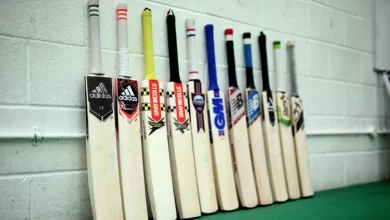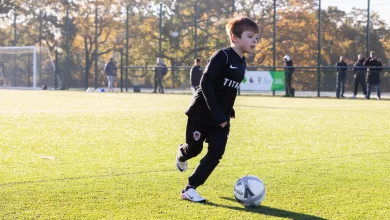The Importance of Player Development in Ice Hockey: Building Future Stars

In ice hockey, success on the ice is not just about the players you have today, but the players you are developing for the future.
Player development plays a crucial role in shaping the next generation of stars, and the ability to nurture young talent is a key factor in a team’s long-term success.
From minor leagues to professional training programs, ice hockey development is a multi-faceted process that requires attention to skill-building, mental toughness, and team dynamics.
This article explores the importance of player development in ice hockey and how it shapes the future of the sport.
1. Early Development: Laying the Foundation
The journey of an ice hockey player begins at an early age, with most players starting in minor or junior leagues.
Early development is focused on building fundamental skills such as skating, stickhandling, shooting, and passing.
These foundational skills are essential for players as they progress through the ranks and take on more complex aspects of the game.
In many countries, children start playing ice hockey as young as four or five years old, often in recreational leagues that focus on having fun and developing basic skills.
From there, players progress to more competitive levels as they grow older, moving into travel teams, junior leagues, or academies that offer specialized training.
At this stage, player development is about ensuring that athletes gain a love for the game while mastering the core elements.
Organizations like the Toronto Maple Leafs’ development programs and USA Hockey’s National Team Development Program have dedicated systems in place to identify and nurture young talent early on.
2. Junior and Minor Leagues: Transitioning to Competitive Play
As players grow older, they begin to enter more competitive arenas where the focus shifts from skill acquisition to refining techniques and understanding the nuances of the game.
Junior leagues, such as the CHL (Canadian Hockey League) or NCAA programs in the United States, play a crucial role in developing players who are looking to make the jump to the professional level.
Junior and minor leagues offer athletes a more competitive environment, where the intensity of play is much higher.
These leagues not only help players fine-tune their on-ice abilities but also test their mental and emotional resilience, preparing them for the challenges of professional hockey.
The WHL, OHL, and QMJHL (Canadian Hockey League) serve as primary stepping stones for players aspiring to reach the NHL.
Here, players receive elite coaching and have access to higher levels of competition, making it an important period for players to develop their game and potentially attract the attention of NHL scouts.
3. Skill Development: The Role of Coaches and Trainers
A crucial part of player development is the guidance and mentorship provided by coaches and trainers.
Coaches play a pivotal role in shaping a player’s understanding of the game, helping them develop both technically and tactically.
Whether it’s improving skating technique, refining shooting accuracy, or understanding positional play, the right coaching can make a significant difference in a player’s development.
In addition to traditional coaching, many players also have access to off-ice training, which includes strength and conditioning programs designed to improve athleticism, speed, and endurance.
Modern ice hockey players must be more physically prepared than ever before, and dedicated fitness programs help players build the physical foundation required to compete at the highest levels.
For example, top players like Connor McDavid and Auston Matthews have specialized training regimens that focus not only on on-ice skills but also on their agility, strength, and endurance, giving them a significant edge over their competition.
4. Mental Toughness: Preparing for the Mental and Emotional Demands
While physical skills are important, the mental aspect of ice hockey is just as crucial. The ability to stay focused, deal with pressure, and manage emotions can make or break a player’s career.
A well-rounded development program should include mental conditioning to help athletes perform at their peak, even in high-stress situations.
Psychologists and sports performance coaches work with players to help them build mental toughness.
This includes dealing with setbacks, staying focused during critical moments, and handling the highs and lows of a long season.
Players also learn about goal-setting, self-reflection, and resilience—skills that are essential not only for their careers but also for their personal lives.
Patrick Kane and Sidney Crosby are prime examples of players who have excelled mentally as much as they have physically.
Both have faced immense pressure and expectations throughout their careers but have thrived thanks to their strong mental fortitude.
5. The Role of Analytics in Player Development
In recent years, analytics has become an integral part of player development in ice hockey. Teams now use advanced statistics to assess players’ strengths and weaknesses more precisely than ever before.
Metrics such as Corsi, Fenwick, and expected goals (xG) help coaches and general managers make more informed decisions when evaluating players.
Analytics can provide a deeper understanding of how a player performs in specific situations, such as power plays, penalty kills, or at even strength.
This data helps identify areas for improvement, such as shot accuracy, defensive positioning, and puck possession.
The rise of data analytics has transformed how teams train and scout players, allowing them to make data-driven decisions when it comes to development.
Teams like the Montreal Canadiens and the Toronto Maple Leafs have been at the forefront of using analytics in player development, ensuring they remain competitive by identifying emerging trends and leveraging data to enhance player performance.
6. The Importance of Mentorship: Veteran Players as Role Models
Another key element of player development is mentorship from veteran players.
Established stars like Zdeno Chara, Wayne Gretzky, and Jonathan Toews often serve as mentors to younger players, offering advice and sharing their experience both on and off the ice.
Having role models who have been through the rigors of professional hockey can be invaluable for younger players looking to make their mark in the league.
Mentorship also plays a critical role in the transition to professional hockey. Rookie players who enter the NHL can struggle to adjust to the speed, intensity, and pressure of the league.
Veteran players help guide these newcomers through the ups and downs, providing a sense of stability and direction during their early years.
7. Reddy Anna laser247: Engaging with the Future Stars
Fans can also get involved in the development of future hockey stars through platforms like Reddy Anna laser247.
Whether it’s through fantasy games, sports betting, or analyzing player performance, fans have the opportunity to engage with the process of player development in new and exciting ways.
For example, players who perform well in junior leagues or NCAA programs might be of interest to those looking to place bets or draft them in fantasy leagues.
By following the development of young talent, users on Reddy Anna laser247 can predict future success and gain insights into the next generation of stars.
Additionally, betting on player development milestones, such as rookie of the year awards or player growth, adds another layer of excitement for fans who love to engage with the game on a deeper level.
8. Conclusion
Player development in ice hockey is an ongoing process that begins at an early age and continues through a player’s professional career.
With the right combination of skill-building, coaching, mental conditioning, and analytics, young athletes can grow into elite players who help shape the future of the sport.
The success of teams often hinges on their ability to develop and nurture talent, and player development has become a critical part of a team’s long-term strategy.
Through platforms like Reddy Anna laser247, fans can follow the development of future hockey stars and engage with the sport in an interactive way.
As the game continues to evolve and new players emerge, the importance of player development will remain a key factor in the success of ice hockey teams worldwide.




